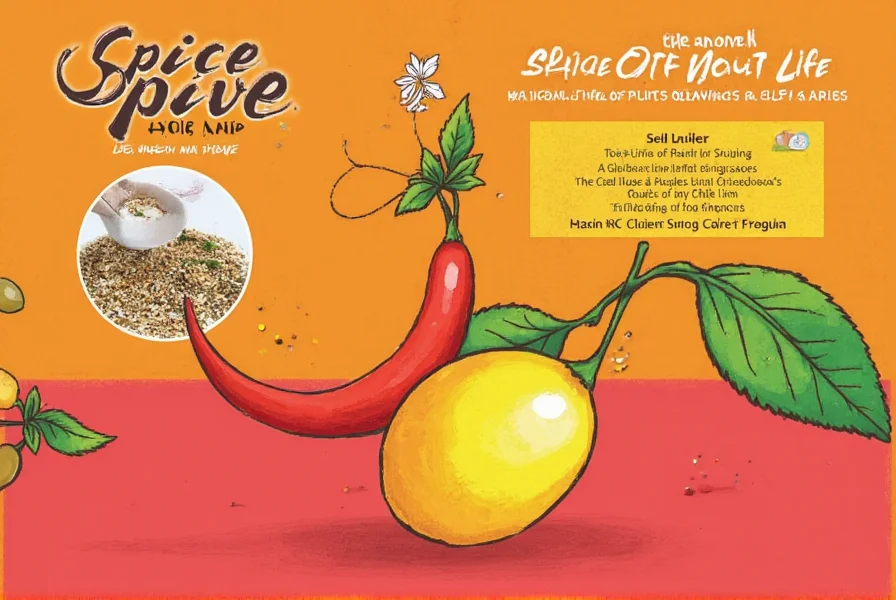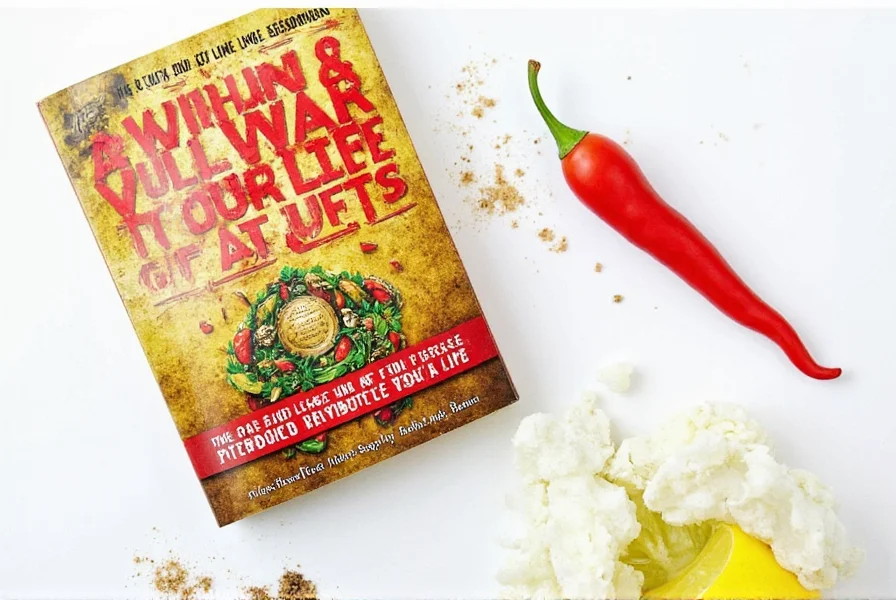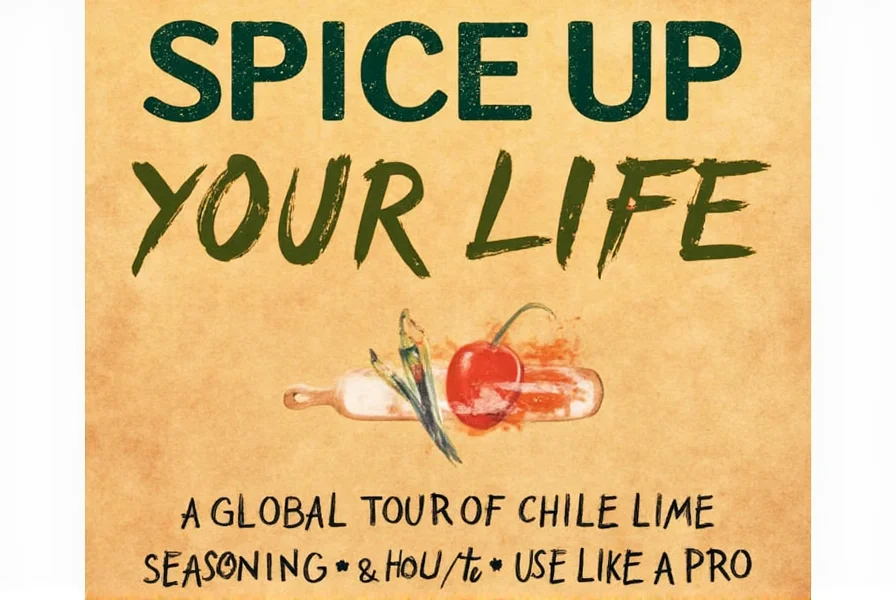Chile lime seasoning is a versatile spice blend made from dried chiles, lime zest, and salt. It's widely used in Mexican cuisine but has become popular worldwide for adding a tangy, spicy kick to fruits, snacks, and dishes. This guide covers everything you need to know about chile lime seasoning, including its uses, how to make it at home, buying tips, and answers to common questions.

What Is Chile Lime Seasoning?
Chile lime seasoning (also called "chili lime salt" or "tajín") is a versatile spice blend that typically combines ground dried chiles, lime zest, and salt. Some variations may include other ingredients like dehydrated lime juice, garlic powder, or even citrus oils for an extra aromatic kick.
Traditional Components:
- Dried Chiles: Usually made from mild to medium-hot peppers like guajillo or ancho chiles.
- Lime Zest: Dried lime peel adds brightness and acidity without moisture.
- Salt: Balances the spice and enhances the overall flavor profile.
| Region | Signature Use | Unique Ingredients |
|---|---|---|
| Mexico | Tacos, fruit cups, grilled corn | Tajín, chili powder, sea salt |
| Peru | Ceviche, popcorn, potatoes | Aji amarillo, lemon zest, crushed corn |
| Thailand | Papaya salad, seafood skewers | Bird's eye chili, kaffir lime leaves |
| India | Fruit chaat, roasted nuts | Red chili powder, dried lemon peel, cumin |
| United States | Corn chips, cocktails, popcorn chicken | Commercial blends, citrus salts, smoked paprika |
Pro Tip:
Try experimenting with regional spices to give your homemade chile lime seasoning a unique spin. For example, add lemongrass or ginger for an Asian-inspired version!

How to Use Chile Lime Seasoning Like a Flavor Pro
You don't have to stick to tacos and mangoes — chile lime seasoning can be used in dozens of creative ways to jazz up your meals. Here are some top-notch ideas:
Snack Attack
- Sprinkle on fresh fruit like pineapple, watermelon, or cucumber slices
- Add to popcorn, roasted nuts, or plantain chips
- Mix into dips like guacamole, hummus, or Greek yogurt sauces
Meal Enhancer
- Rub onto grilled meats or fish before cooking
- Add to rice, beans, or roasted veggies for a zesty boost
- Use as a finishing touch on burgers, wraps, or grain bowls
Drink Drizzle
- Rim a margarita glass with a chile lime-salt mixture
- Stir into bloody marys or citrus-based smoothies
| Feature | Good Option | Not Recommended |
|---|---|---|
| Ingredients | Natural chile, lime zest, minimal additives | Artificial flavors, preservatives, MSG |
| Texture | Uniform fine powder | Lumpy, clumpy, or overly coarse |
| Heat Level | Mild to moderate (check label) | Overly hot or inconsistent |
| Packaging | Sealed, airtight container | Open bag or unsealed pouch |
| Brand Reputation | Established spice brands or artisanal labels | Unknown or generic brands |
Top 5 Chile Lime Seasoning Brands (Editor's Picks):
- Tajín – Classic, balanced, and globally loved
- Badia Lime & Chili Seasoning – Affordable and easy to find
- La Costeña Chile Limón – Bold flavor, slightly spicier
- McCormick Citrus Chili Blend – Great for beginners
- Urban Accents Citrus Fiesta – Fun, fruity twist

DIY Time: Make Your Own Chile Lime Seasoning at Home
Want full control over the heat level, tartness, and texture? Making your own chile lime seasoning is easier than you think. Here's a basic recipe to get you started:
Homemade Chile Lime Seasoning Recipe
- 1 tbsp ground dried chile (ancho, guajillo, or arbol for heat)
- 1 tsp dried lime zest (or lemon if unavailable)
- 1 tsp sea salt
- Optional: ½ tsp garlic powder, ¼ tsp smoked paprika
Instructions:
- Grind dried chiles in a spice grinder until powdered.
- Zest fresh limes and dry thoroughly (use a dehydrator or oven at low heat).
- Mix all ingredients together and store in an airtight container.
Store in a cool, dark place and use within 6 months for optimal flavor.
Flavor Pairings That Will Blow Your Mind
The magic of chile lime seasoning lies in its versatility. Here are some surprising yet delicious pairings that will elevate your next meal:
Classic Combinations:
- Grilled corn with mayo and cotija cheese
- Fruit cups with mango, jicama, and cucumber
- Taco shells dusted with a pinch of seasoning
Unexpected Delights:
- Roasted sweet potatoes with chive sour cream
- Shrimp ceviche topped with crispy tortilla strips
- Dark chocolate avocado mousse (yes, really!)
Pro Chef Hack:
Make a quick chile lime vinaigrette by mixing 1 tsp seasoning with olive oil, honey, and apple cider vinegar — perfect for salads or marinades!

The Rise of Spicy + Citrus: Trend or Keeper?
Why is chile lime seasoning suddenly everywhere? The answer lies in flavor science — and our evolving palates. The combination of capsaicin (the compound that makes peppers hot) and citric acid creates a sensory explosion that activates multiple taste receptors at once. It's bold, bright, and addictive.
Why It Works:
- Balanced Flavors: Heat meets acidity in perfect harmony.
- Versatility: Works in savory, sweet, and even cocktail applications.
- Visual Appeal: Adds color and flair to any dish.
From TikTok food hacks to Michelin-starred menus, chile lime seasoning isn't going anywhere. If anything, it's becoming a pantry essential across generations and cuisines.
Frequently Asked Questions
What's the difference between chile lime seasoning and Tajín?
Tajín is actually a specific brand of chile lime seasoning that originated in Mexico. While "chile lime seasoning" refers to the general category of spice blends combining chiles, lime, and salt, Tajín is one of the most popular commercial versions. Think of it like Kleenex and tissues - Tajín has become somewhat synonymous with chile lime seasoning, but there are many other brands and homemade versions available.
How spicy is chile lime seasoning?
Most chile lime seasonings are designed to be mild to moderately spicy with a prominent tangy lime flavor. The heat level typically ranges from 500-2,500 on the Scoville scale, which is much milder than jalapeños (2,500-8,000). The focus is on the citrusy flavor with just a hint of heat, making it approachable for most palates. Commercial blends like Tajín are specifically formulated to be family-friendly in terms of heat.
Does chile lime seasoning contain actual lime juice?
Most commercial chile lime seasonings use dehydrated lime zest or lime powder rather than actual liquid lime juice. This is because moisture would cause the seasoning to clump and spoil more quickly. The lime flavor comes from dried lime peel, which provides concentrated citrus flavor without the liquid content. Some premium blends may include natural lime oil for enhanced flavor.
How should I store chile lime seasoning?
Store chile lime seasoning in an airtight container away from direct sunlight and heat sources. Properly stored, commercial blends can last 1-2 years, while homemade versions are best used within 6 months for optimal flavor. Avoid storing it near the stove or in humid areas like above the sink, as moisture and heat will degrade the quality and shorten its shelf life.
Is chile lime seasoning gluten-free?
Most pure chile lime seasonings are naturally gluten-free, as they typically contain just chiles, lime, and salt. However, always check the label if you have celiac disease or severe gluten sensitivity, as some commercial blends may be processed in facilities that handle gluten-containing products. The vast majority of popular brands like Tajín are certified gluten-free, but it's always best to verify with the specific product you're purchasing.
Can I use chile lime seasoning in sweet dishes?
Absolutely! Chile lime seasoning shines in sweet applications. It's commonly sprinkled on fresh fruits like mango, watermelon, pineapple, and even watermelon. The acidity of the lime balances the sweetness of the fruit while the mild heat adds an intriguing dimension. You can also experiment with adding small amounts to chocolate desserts, citrus-based cakes, or even rimming glasses for sweet cocktails like margaritas.
What are the health benefits of chile lime seasoning?
Chile lime seasoning offers several potential health benefits. The chiles contain capsaicin, which may boost metabolism and has anti-inflammatory properties. Lime provides vitamin C and antioxidants. When used as a flavorful alternative to salt, it can help reduce sodium intake while still delivering satisfying taste. However, it's important to note that commercial blends still contain salt, so check labels if you're monitoring sodium consumption.
Final Thoughts: Spice Up Your Plate, Not Just Your Palate
Chile lime seasoning is more than a passing fad — it's a flavorful gateway to exploring global tastes from your own kitchen. Whether you're a curious home cook or a seasoned chef, this simple blend offers endless possibilities for creativity and customization.
So next time you reach for the salt shaker, why not try something with a little kick and a splash of citrus instead? With chile lime seasoning, every bite becomes a mini vacation — no passport required.











 浙公网安备
33010002000092号
浙公网安备
33010002000092号 浙B2-20120091-4
浙B2-20120091-4